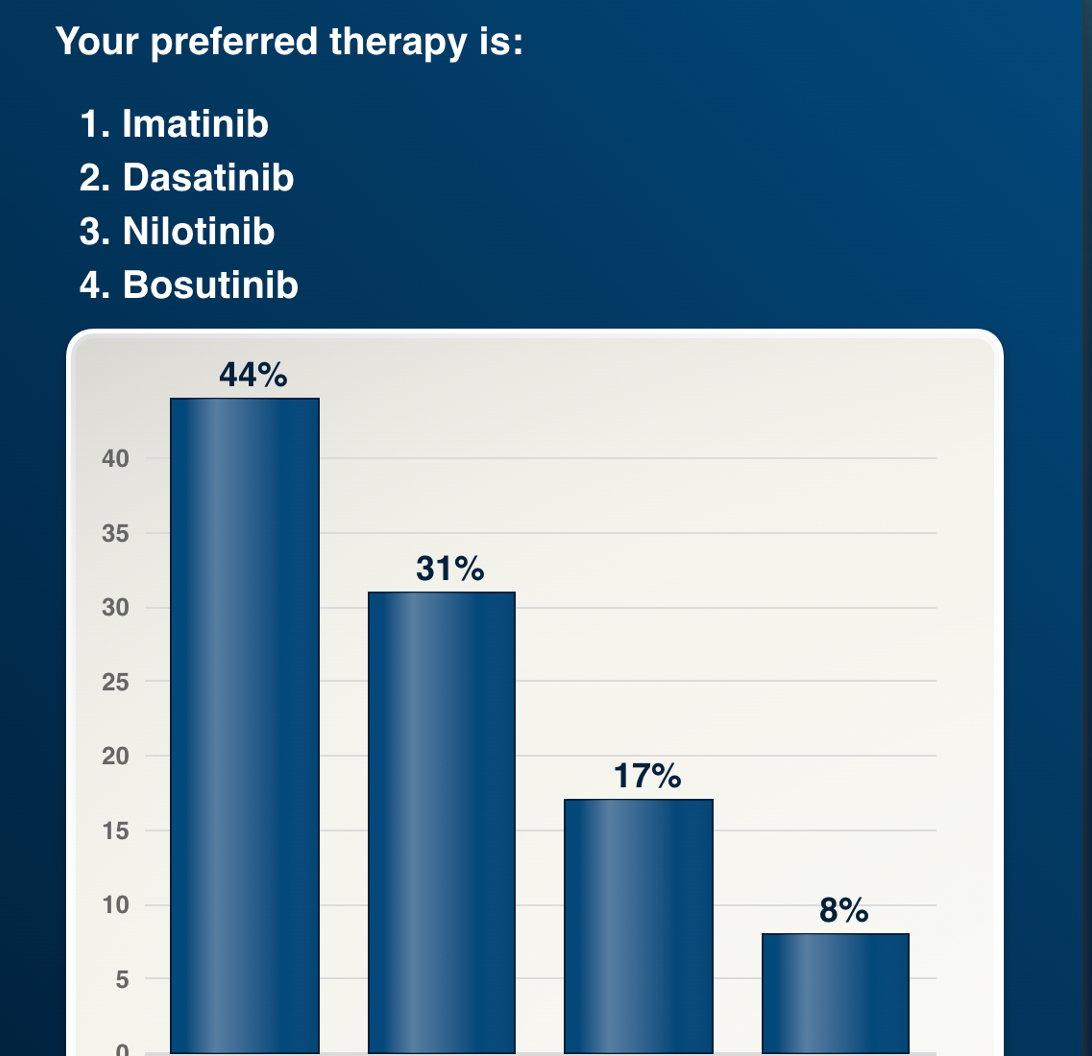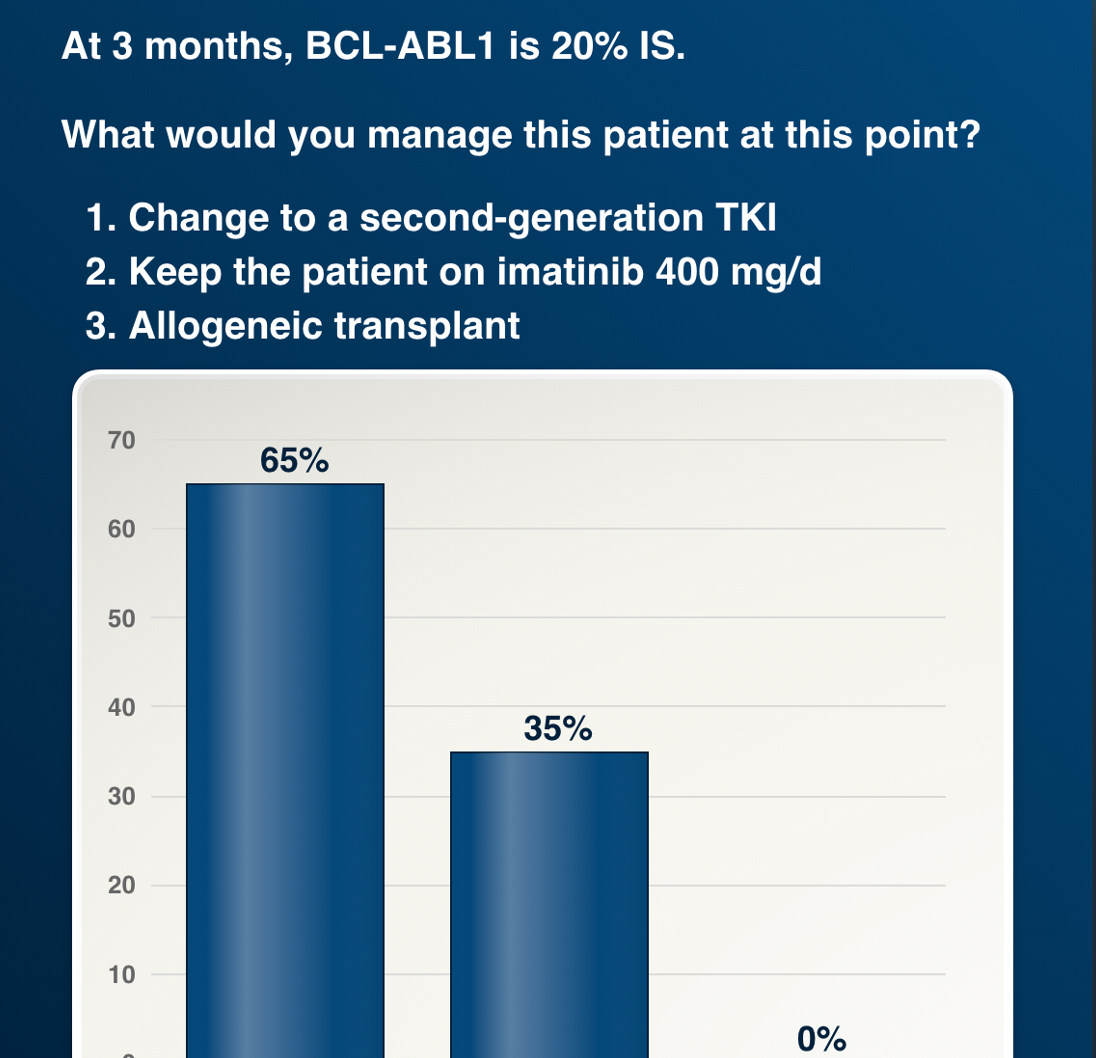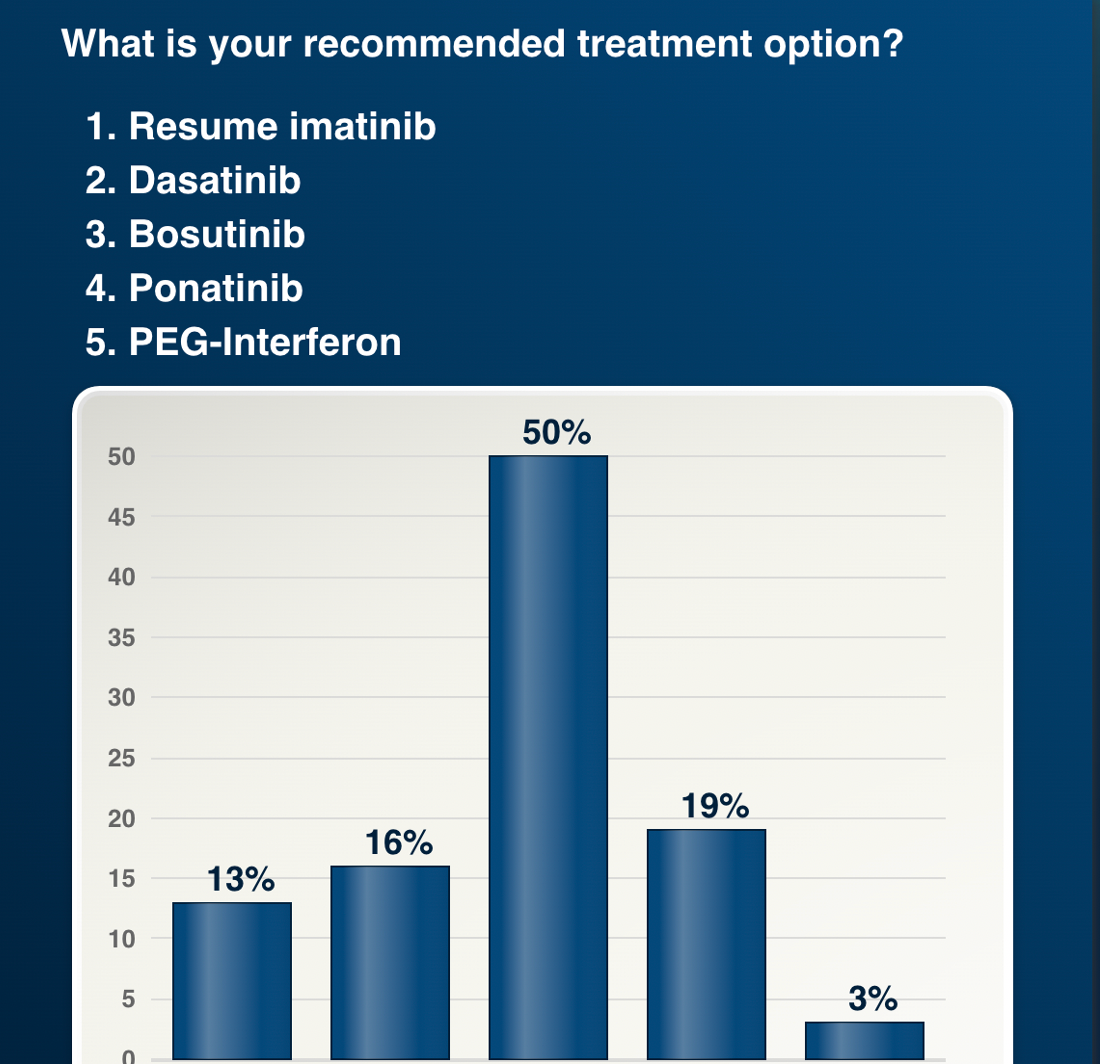CML Experts Consider Challenging Cases Faced in Clinical Practice
A panel of experts in chronic myeloid leukemia share insight on how to optimally approach treatment based on patient characteristics.
Jorge E. Cortes, MD

During the 4th Annual Live Medical Crossfire® in Hematologic Malignancies, a program developed by Physicians’ Education Resource® (PER®), LLC, a panel of experts in chronic myeloid leukemia (CML), shared insight on how to optimally approach treatment based on patient characteristics.1
In the session, which had been moderated by Elias Jabbour, MD, a professor in the Department of Leukemia of the Division of Cancer Medicine at The University of Texas MD Anderson Cancer Center, the panel highlighted difficult scenarios faced in clinical practice, weighed the data that they would use to inform their decisions, and collectively discussed how they would proceed for each case.
The panel was comprised of Jorge E. Cortes, MD, director of the Georgia Cancer Center and eminent scholar of the Georgia Research Alliance of Augusta University; Michael J. Mauro, MD, leader of the Myeloproliferative Neoplasms Program, attending physician of Leukemia Service, and member of Memorial Sloan Kettering Cancer Center, as well as a professor of medicine at Weill Cornell Medical College; Javier A. Pinilla-Ibarz, MD, PhD, senior member, head of the Lymphoma Section and director of Immunotherapy in the Department of Malignant Hematology at Moffitt Cancer Center; and Jerald P. Radich, MD, a professor in the Clinical Research Division of Fred Hutchinson Cancer Center and a professor in the Division of Medical Oncology at the University of Washington School of Medicine.
Establishing Frontline Approach for High-Risk CML With Comorbidities
Jabbour kicked off the discussion by sharing the case of a 57-year-old male with obesity and a long-standing history of smoking. Notably, the patient also had several comorbidities, including diabetes, hypertension, and hypercholesterolemia, according to Jabbour. The patient was diagnosed with CML with a high-risk Sokal score.
When posed to the audience viewing the program, 44% reported that they would turn to imatinib (Gleevec), 31% said dasatinib (Sprycel), 17% said nilotinib (Tasigna), and only 8% said bosutinib (Bosulif; Figure 1).
Figure 1: Case 1 Poll Results

“It is increasingly important to involve the patient in the decision about their treatment to understand what their goals are,” said Cortes. “That being said, in [this scenario], is very likely that the patient will be interested in pursuing a deeper molecular response and a treatment-free-remission (TFR). In that case, a second-generation TKI [would be] the best option. Out of these TKIs, perhaps the 1 with the lowest cardiac toxicity is bosutinib; that's what I would use.”
He added that imatinib is a reasonable choice if the patient is not interested in achieving a TFR; he made the point that given the patient’s comorbidities, he has a lower probability of responding to imatinib. Because nilotinib and bosutinib have a similar risk of cardiovascular toxicities, added Cortes, he would not use dasatinib—especially at the standard dose.
Mauro countered that the question regarding cardiovascular toxicities remains unclear. “It’s true that bosutinib does probably offer the lowest risk of up-front adverse effects (AEs), but tolerability can [still] be an issue,” said Mauro. “My thought was that even though the patient has high-risk disease, imatinib would be a very safe drug. If you spoke with him about it, you can always optimize therapy. We've seen some nice studies showing that if you optimize imatinib early on, you can probably do almost as good as if you used a second-generation TKI first. If you did start with imatinib, and the patient didn't experience an early response, you could always switch early to a second-generation TKI.”
Radich pointed out that the reason there was just an 8% vote from the audience to utilize bosutinib in this clinical scenario is likely to do with the fact that many in the CML community have not had too much experience with the agent. Bosutinib was the newest agent to join the armamentarium in December 2017. “The natural choice is to pick something that you know works, what the AEs look like, [and how to manage those]; there's a lot to be said about that,” noted Radich.
Post-Imatinib Treatment Decisions: Continue or Switch?
The panel shifted over to second-line treatment decisions when Radich brought up the case of a 50-year-old male with chronic phase, intermediate-risk disease, for whom imatinib is started. Following molecular monitoring, at 3 months their BCR-ABL1 is 20%, which does not meet the milestone of 10%. Radich posed the question of whether it would be more appropriate to keep the patient on imatinib or to switch the patient over to treatment with a second-generation TKI.
Results from the online poll revealed that the resounding majority of audience members, or 65%, would proceed by switching treatment, while 35% said they would keep the patient on a 400 mg daily dose of imatinib (Figure 2).
Figure 2: Case 2 Poll Results

“One issue is that patients can have a low response because of either disease biology or because of adherence, and many have trouble staying on a drug early on because of the AEs,” said Radich. “As such, if you get to a point like this and you decide that your patient is adherent, I’m certainly fine with watching them and staying on the drug. It really depends on where the patient's baseline is, where they have gone to, and whether or not you think the patient is being compliant or not.”
Cortes pointed out that it’s important to address that so many would choose to switch to a second-generation TKI. “It’s a knee-jerk reaction to change therapy, but what’s the benefit of doing that?” he questioned. He cited that the phase 2 DASCERN study (NCT01593254) comparing dasatinib with imatinib in patients who did not have a favorable response to imatinib suggested a switch to dasatinib could result in clinical benefit.2 Results from the trial showed a 29% major molecular response with dasatinib versus 13% with imatinib at 12 months. However, at 24 months in the intent-to-treat population, no major difference in progression-free (96% vs 95%, respectively) or overall survival (98% vs 97%, respectively) was reported.
“I personally would absolutely not change at 3 months,” Cortes concluded.
Pinilla-Ibarz added that he often sees that many within the community are eager to switch TKIs right away, but he admitted this is not his personal approach. “Repeat testing as soon as possible and then after that, really consider everything that is being discussed today,” he said. “It’s possible that you have time [before you need] to switch.”
Approaching Later-Line Treatment
The panel closed out the discussion with the case of a 34-year-old patient who was diagnosed with CML and had received imatinib at 400 mg daily. After an initial complete cytogenetic response, she went on to receive nilotinib. Very quickly afterward, after 3 months on therapy, the patient had angina and thus, treatment was discontinued. She had 85% Ph-positive metaphases.
Results from the poll on how to proceed showed that 50% would turn to bosutinib, 19% would use ponatinib, 16% would use dasatinib, 13% would resume imatinib, and 3% would turn to pegylated interferon (Figure 3).
Figure 3: Case 3 Poll Results

“It’s hard to say that this patient is resistant to nilotinib. They didn’t have too much time to receive the treatment [before the AE]. Moving laterally will not help you in the case of resistance but in this context moving to bosutinib is a proper action,” said Cortes. “It comes with a low risk of certain events. Of course, you need to investigate other comorbidities or risk factors and eliminate them, but I believe it is a good option.”
Cortes added that although ponatinib would potentially provide the highest probability for response, it comes with risks. As such, he would choose bosutinib first.
“What I think is fascinating is the angina following 3 months of treatment,” added Pinilla-Ibarz. “I have to admit that I’ve never seen that with nilotinib, but it’s definitely a possibility. It’s quite concerning in a patient of that age. But I agree with Dr. Cortes in this case, bosutinib is the potential next step.”
Mauro reminded the audience that CML is not always an easy disease to manage. “We need to work on collaborative efforts and create guidelines to help us appropriately care for these patients,” he concluded.
References
- 4th Annual Live Medical Crossfire® in Hematologic Malignancies. July 11, 2020; Virtual. Accessed July 11, 2020. bit.ly/2CpbhXG.
- Cortes JE, Jiang Q, Wang J, et al. Dasatinib vs. imatinib in patients with chronic myeloid leukemia in chronic phase (CML-CP) who have not achieved a optimal response to 3 months of imatinib therapy: the DASCERN randomized study. Leukemia. Published online April 7, 2020. doi:10.1038/s41375-020-0805-1



